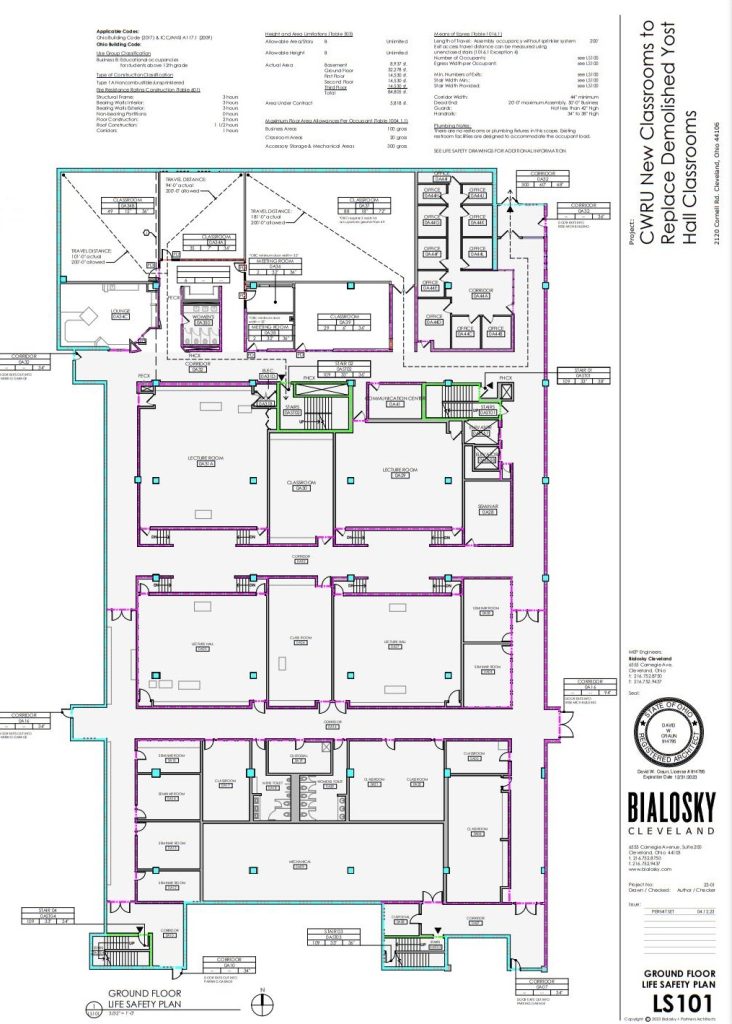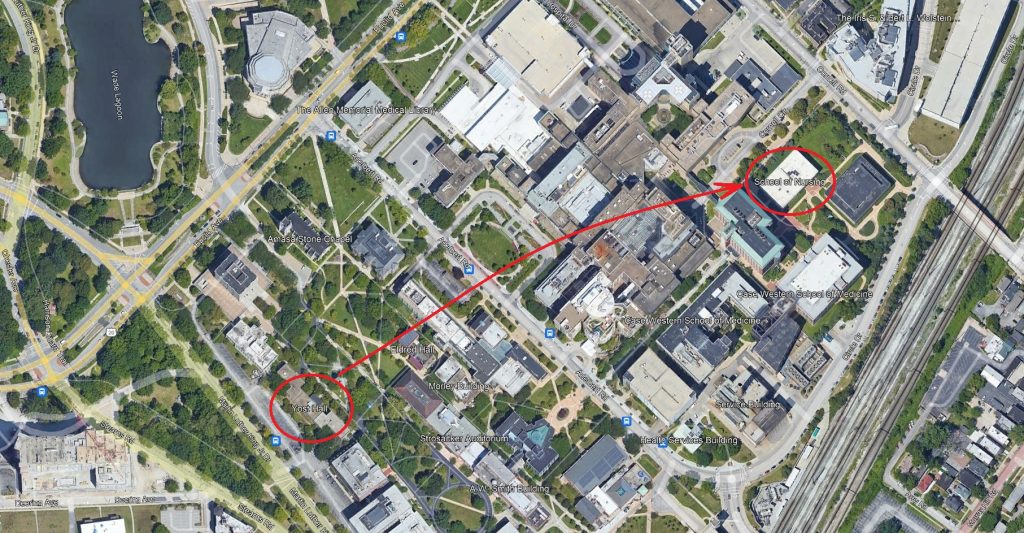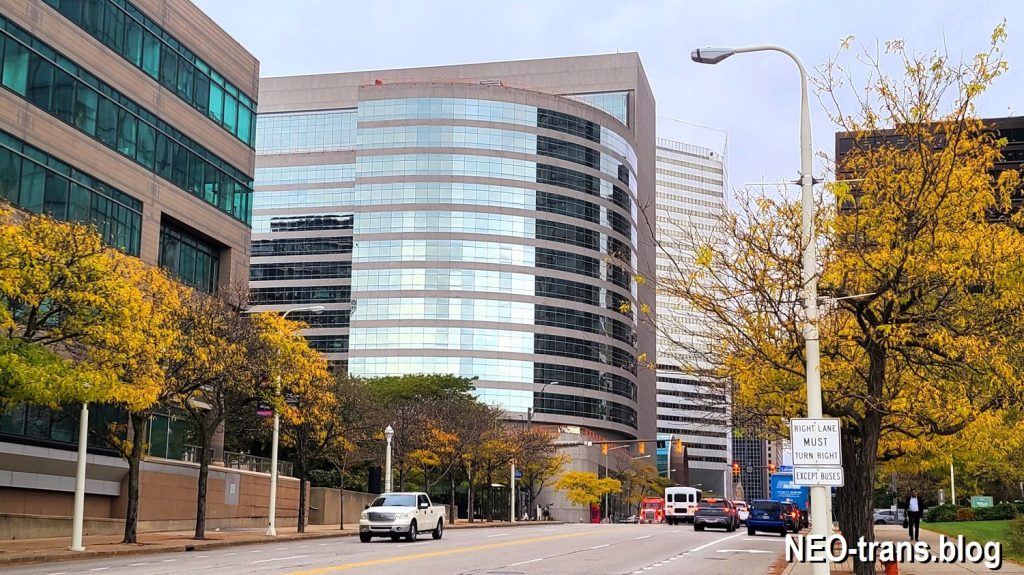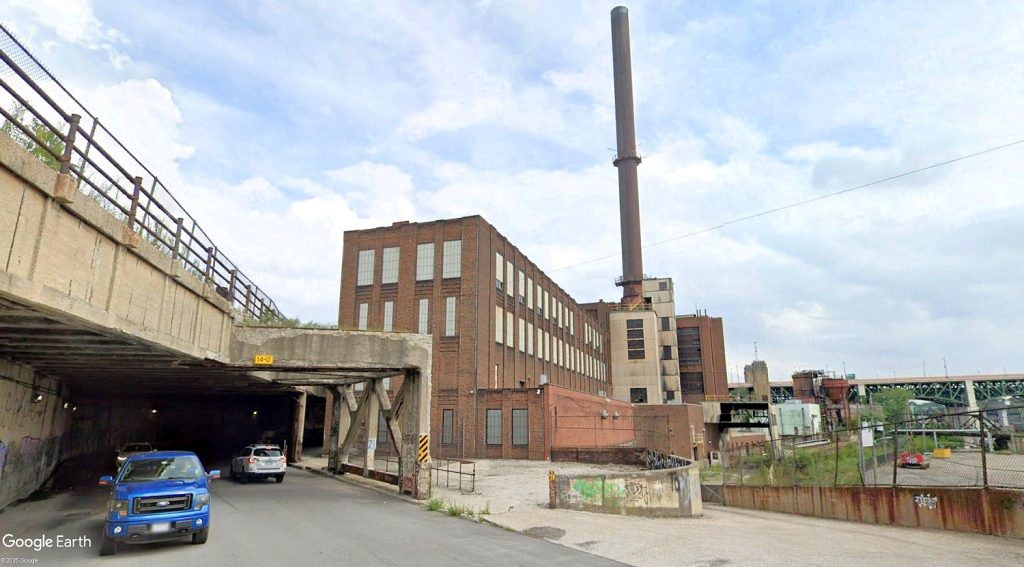
Yost Hall at Case Western Reserve University is to be demolished this summer to make way for a research center that could be five times larger than Yost. This is no longer a theoretical project as the university is already making moves to relocate classes currently at Yost Hall (Google). CLICK IMAGES TO ENLARGE THEM.
Makes moves to demolish Yost Hall for new center
A proposed Interdisciplinary Science and Engineering Building with a construction budget roughly equal to that of the new Sherwin-Williams headquarters’ original tab is no longer just an idea for administrators, staff and students at Case Western Reserve University (CWRU). The university is already making moves to relocate classes and other services and activities out of Yost Hall, 2049 Martin Luther King Jr. Dr., so it can be demolished this summer to make way for the new research center.
A source close to CWRU’s administration told NEOtrans on the condition of anonymity that the university’s efforts to open up a site on the Case Quad for the new research center was the latest indication of the administration’s commitment to build the new $300 million research facility. The source added that CWRU’s administrators wouldn’t be taking steps to demolish Yost Hall if they weren’t confident in being able to build what is estimated at this early stage of planning to be a 250,000-square-foot facility to unite the university’s College of Arts and Sciences and the Case School of Engineering, along with CWRU’s Next Generation Health Care initiative.
At an alumni event held at the start of the fall semester last year, CWRU President Eric Kaler announced that the university had already amassed nearly half of the funding for the new Interdisciplinary Science and Engineering Building. Additional progress has been made in philanthropic fundraising since that event was held and has led to planning work for brick-and-mortar activities, the source added.
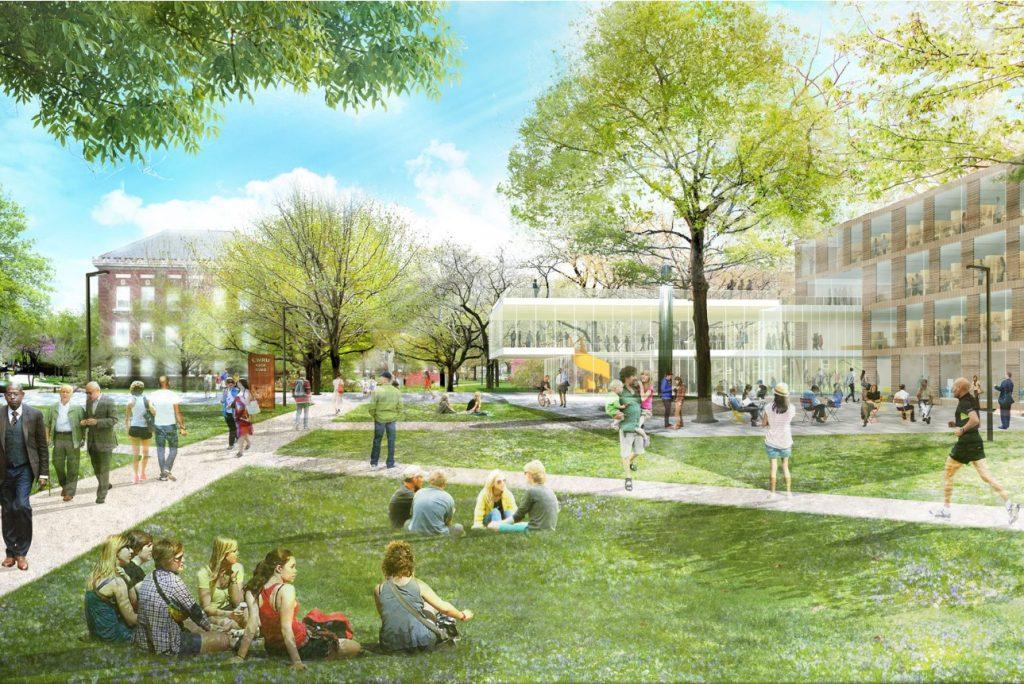
A conceptual rendering of the proposed Interdisciplinary Science and Engineering Building, at right, on the Case Quad. This was from the 2018 masterplan when the research building was proposed to be only 173,000 square feet. But growing demands for collaboration between the College of Arts and Sciences and the Case School of Engineering as well as a need for more interdisciplinary teaching and research pushed the scale higher (CWRU).
Last week, CWRU submitted building permit applications to the city of Cleveland’s Building Department to refurbish existing classrooms on the ground floor of the Frances Payne Bolton School of Nursing, 2120 Cornell Rd. The budget for renovating approximately 5,818 square feet of its classroom space, according to the application submitted by architect Bialosky Cleveland, is $610,000.
CWRU’s 2018 campus development masterplan identified the Bolton School of Nursing and the neighboring, former Department of Community Dentistry as potential swing spaces during the construction or renovation of buildings on the Case Quad — projects like the new research center or planned renovations to the Robbins or Biomedical Research buildings. Dentistry programs were relocated in 2018 to the new School of Dental Medicine, 9601 Chester Ave. After their use as swing space, the Bolton School and the old dental school may be demolished, the masterplan proposed.
But on April 18, a letter signed by 81 professors and other staff within the university’s Department of Mathematics, based at the doomed Yost Hall, was sent to Joy Ward, dean of the College of Arts and Sciences. The letter conveyed their frustration over an apparent lack of clear information from the university’s administration about where their classes, offices and meeting spaces would be relocated, or if some functions would be accommodated at all.
“Without available meeting spaces, we would have no dedicated rooms for departmental tutoring and sessions, no space for our weekly colloquia and seminars, and no space for informal meetings of faculty, graduate students, and undergraduate students,” a portion of the letter states. “For us to do our work, we need to interact with others. You would not have a Biology Department if you didn’t have space for labs. Our labs are the spaces where we meet with colleagues and students.”
Other services and activities based at Yost Hall include CWRU’s office for TRIO Programs for disadvantaged students, employment office, financial aid and registrar. They are all being relocated to other buildings as well, including to converted spaces in the Health Services Building on Adelbert Road, the Sears Building on MLK Drive, and elsewhere on campus.
CWRU Media Relations staff were unavailable for comment on the proposed research center or the relocation of Yost Hall’s activities.
Last September, media relations staff informed NEOtrans that the research center was a key part of CWRU’s efforts to increase externally funded research from $400 million per year to $600 million per year over the decade. A driver of the research center and its expanded budget is the Cleveland Innovation District — an initiative of JobsOhio and multiple local partners including CWRU. The university’s Next Generation Health Care initiative, a beneficiary of innovation district funding, will build on CWRU’s biomedical technologies and drug development to advance diagnosis and treatment for cancer, cardiac, neurological and infectious diseases.
Yost Hall was built in 1951 as a 50,000-square-foot residence hall for the Case Institute of Technology, before the 1967 merger with Western Reserve University. The latter school was founded as an independent institution in Hudson in 1826. Its buildings are now used by the Western Reserve Academy. The former campus of the Case Institute of Technology, now called the Case Quad, is still home to the university’s engineering, sciences and technology programs.
CWRU’s campus masterplan described the Case Quad as “fragmented and disconnected architecture and landscapes that should be restructured to create integrated, intimate, useful open spaces connected to adjacent districts as well as the surrounding community.” The research center is proposed as a way to remedy those shortcomings. The masterplan was updated with recommendations to also help address housing shortages caused by the university’s enrollment growth of more than 18 percent over the past decade, with the undergraduate population growing 29 percent in that same period, according to CWRU data.
END

